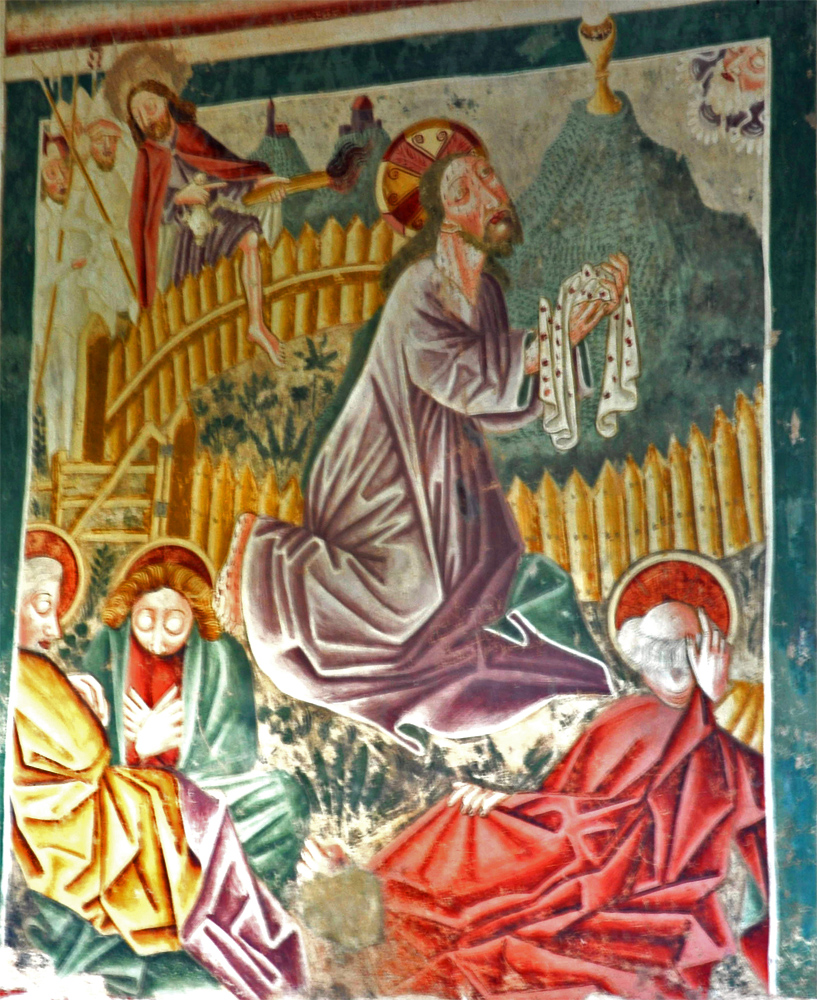
Vincent de Kastav
The Agony in the Garden
1474
Fresco
Church of St. Mary, Beram, Croatia
The three synoptic gospels all tell the same story: While his disciples slept, Jesus prayed to the Father to "take this cup away from me." Here we see him praying, the disciples sleeping, the cup, and even the Father, in the upper right corner.
Kastav follows Luke's gospel in showing that Jesus' sweat fell like drops of blood and in locating the action at the Mount of Olives, which he pictures as a hill covered with rows of olive trees. Unusually, he has also pictured the Father attending to Jesus' prayer.
Even while Jesus prays, Judas approaches from the left clutching his bag of silver coins and holding one of the torches mentioned in John 18:3. Despite the nearby gate he climbs stealthily over a fence, as a band of soldiers awaits. The soldiers are in John's narrative of the event (18:1-2). The stealthy climb alludes to the beginning of the "Good Shepherd" discourse, John 10:1-5 "He that entereth not by the door into the sheepfold, but climbeth up another way, the same is a thief and a robber.… But a stranger they [the sheep] follow not, but fly from him, because they know not the voice of strangers." John Chrysostom remarks on this passage that "the strangers are Theudas and Judas and the false apostles who came after Christ" (Homily xlix, iii, quoted in the Catena Aurea, IV, i, 346). Also relevant is a well-known remark of Augustine's on John 18:
There, accordingly, the wolf, clad in a sheep's skin, and tolerated among the sheep by the profound counsel of the Father of the family, learned where he might opportunely scatter the slender flock, and lay his coveted snares for the Shepherd. Judas then, he adds, having received a cohort, and officers from the chief men and the Pharisees, cometh thither with lanterns, and torches, and weapons. It was a cohort, not of Jews, but of soldiers."1
As in the Last Supper and Kiss of Judas panels in these frescoes, Judas has a halo.
View this image in full resolution.
Read more about images of the Arrest of Jesus.
Photographed at the site by Richard Stracke, shared under Attribution-NonCommercial-ShareAlike license.
1 Augustine, Tractates on the Gospel According to St. John, Tractate 92. A translation of Tractate 92 is at CCEL. The Latin source is in Migne XXXV, 1390. I say "well-known" because the identical words reappear in a later treatise that Migne attributed to Bede (Pat. Lat. XCII, 895).